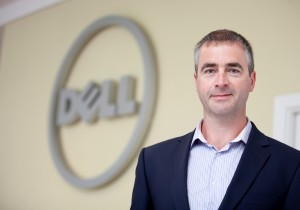“IT should be about letting companies of all sizes focus on what they’re good at, and particularly when you talk to smaller companies, running IT is not a good use of their time. Retaining a certain amount of infrastructure is always going to be essential — you’re always going to have file servers or file and print servers or maybe a payroll system that needs a very particular configuration of hardware,” said Coughlan.

Nobody really enjoys going through an upgrade, particularly one that is forced upon them. But to avail of some of the trends around at the moment, you need to be working with relatively recent technology. If you want to avail of things like mobility, enterprise computing, even big data, you have to fix the plumbing. If you don’t fix the plumbing you are bringing problems into the future, Michael McGrath, Dell
“But something like the current version of Windows Server 2012 R2 provides companies with a kind of a common technology platform that allows them to pick and choose where different elements of their IT services exist and they do that on the basis of what’s a priority for their business.”
When a lynchpin piece of software like a server operating system reaches the end of its useful life, to say that IT departments are inconvenienced is an understatement.
Fixing the plumbing
“They need things like this like they need a hole in the head. This is not sexy work, this is fixing the plumbing,” said Michael McGrath, services sales manager for Dell Ireland.
“Moving from something like Server 2003 can have lots of knock on complications, for example an upgrade of Exchange or maybe Active Directory is absolutely core to how a business functions. But what was best practice in 2003 or in the intervening years between then and now can be quite different.”
Technology companies have learned a lot over the last 20 years. In the early 2000s, wide area networks were much more restricted and bandwidth wasn’t as available, so network design took factors like that into consideration.
“Compare that to the cloud-enabled, mobile, always on, virtualised and pay-as-you–go world we live and work in now. You have to take those into consideration with your design before you can really enjoy their benefits. That’s why it’s really important to spend time doing planning and knowing where you are going,” said McGrath.
Dell’s advice to the companies it has guided through the migration process is to take a broader perspective and as a result get more value out of it.








Subscribers 0
Fans 0
Followers 0
Followers